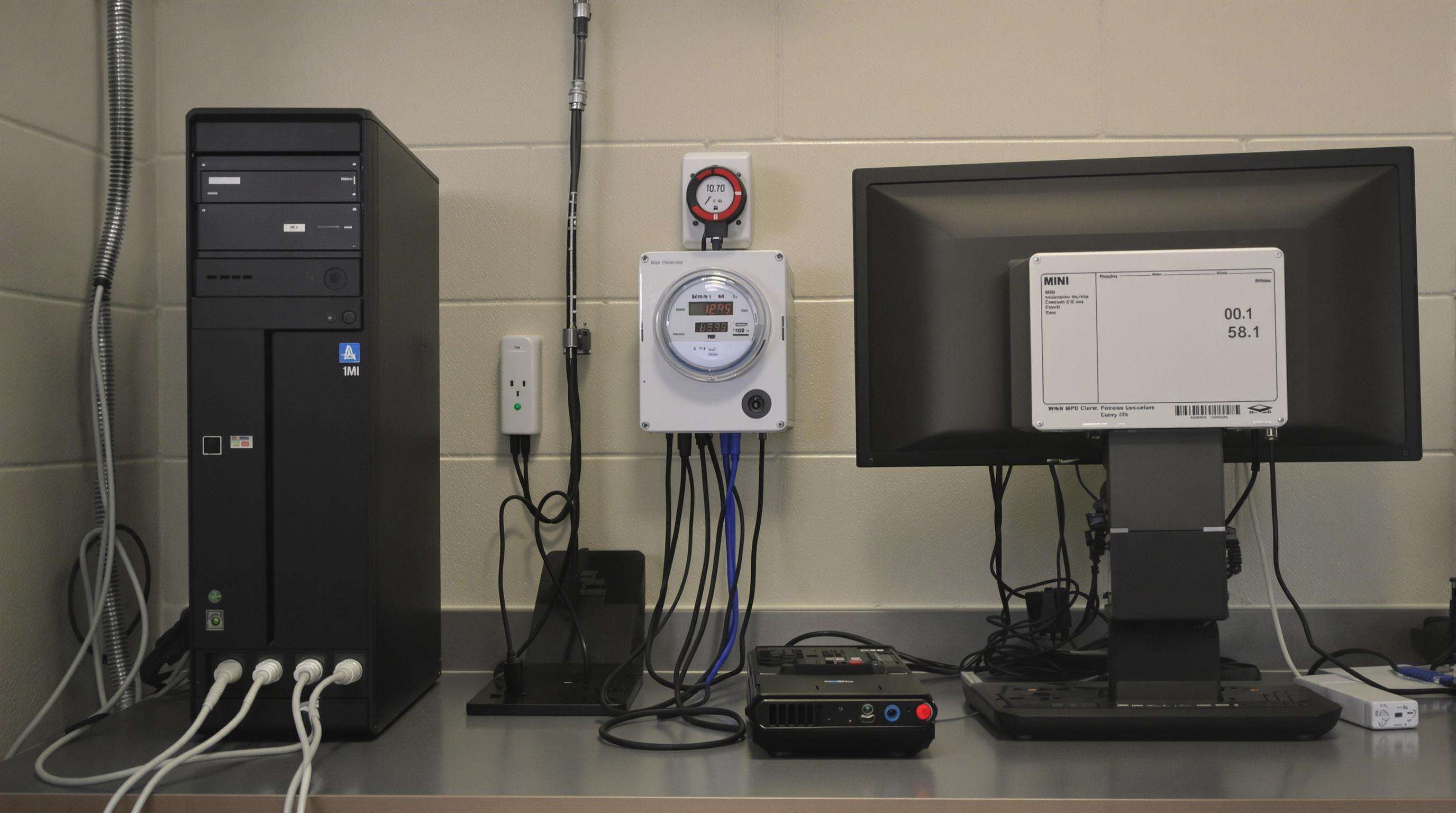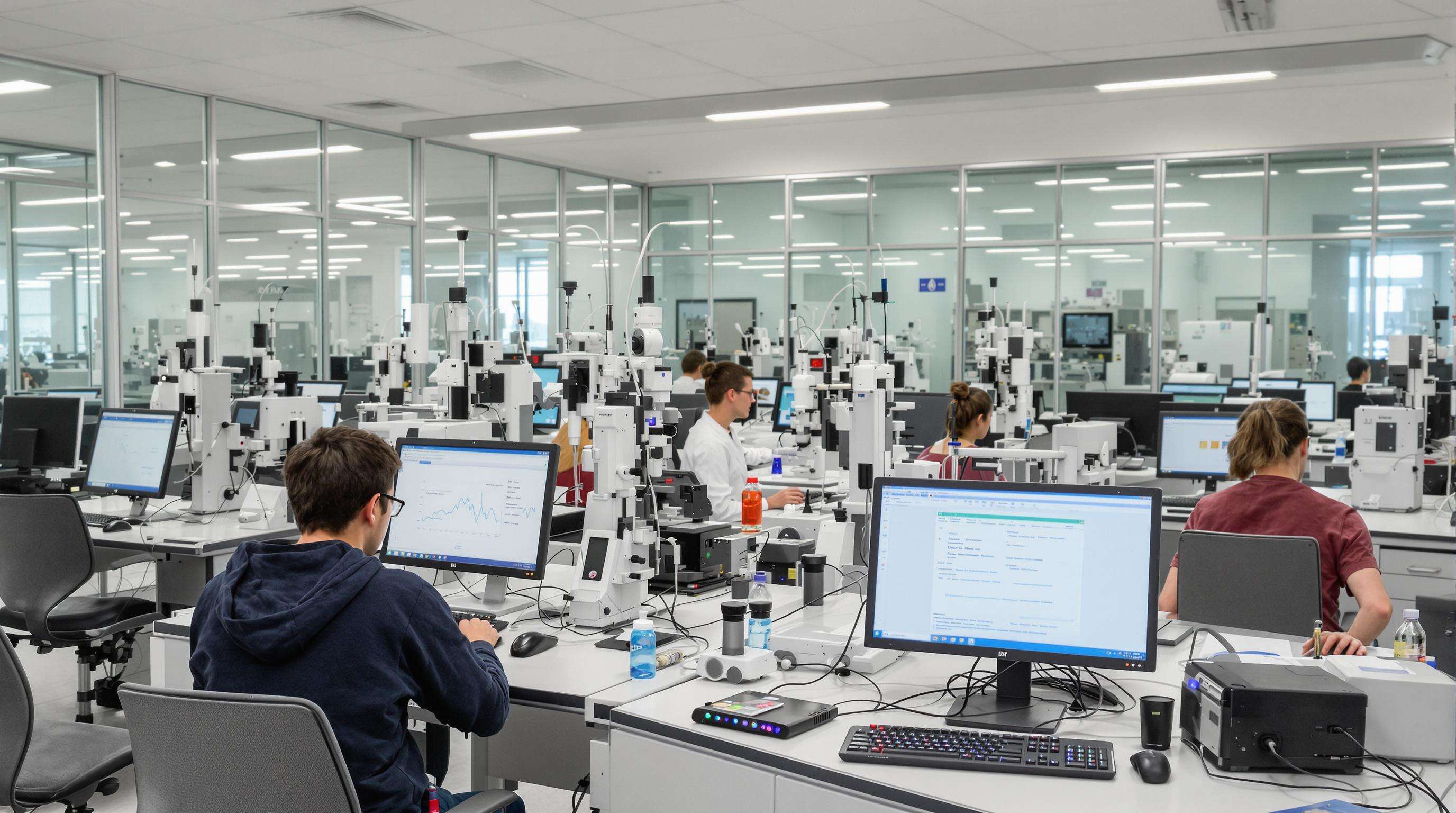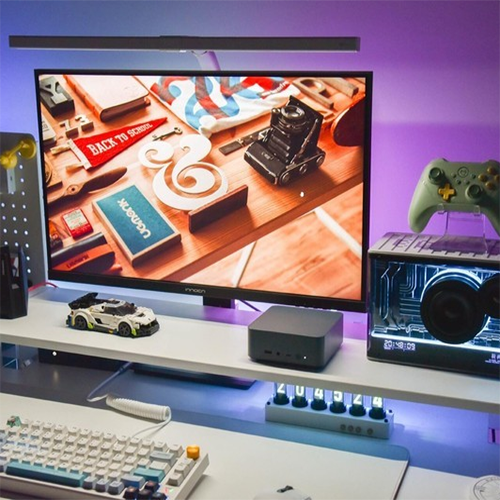Commercial mini PCs now power 27% of educational computing environments globally (IDC 2023), with rapid deployment in STEM labs, collaborative classrooms, and high-traffic library workstations. Their 85% smaller footprint compared to traditional desktops enables institutions to install four times as many stations in shared science labs while maintaining safe workspace margins.
Teachers love how easy it is to move around commercial mini PCs, setting them up as flexible learning stations where they just mount the units behind big touchscreens so classrooms can be rearranged quickly when needed. According to a report from EDUCAUSE last year, schools that adopted this tech saw their setup times drop by about 40 percent during those mixed subject projects where different classes work together. The plug and play nature really helps groups collaborate in real time too. For instance, biology kids doing lab simulations can pass along their findings right away to engineering students sitting at nearby desks without anyone having to wait for complicated transfers or setups.
More than sixty percent of American school districts swapped out their old tower computers for commercial mini PCs starting around 2021. The main reasons? These new systems use about half as much power and run completely silently. Traditional computer setups needed special IT rooms to operate properly. But these newer models just attach right to lab tables using those standard VESA mounts we see everywhere now. That makes a huge difference for colleges trying to grow their engineering labs without extra space requirements. Plus there's something else worth mentioning too. Because they're built in modules that can be upgraded individually, schools are saving money long term. Some reports show lifecycle costs dropping by roughly thirty three percent when compared to regular desktop computers according to EdTech Magazine from last year.
Mini PCs designed for commercial use take up way less room in classrooms when mounted vertically alongside monitors, freeing up about 37% more workspace than those bulky old towers according to some report from EDUCAUSE back in 2023. The smaller footprint means STEM labs can now squeeze in six experiment stations instead of just four regular desktops, which makes a real difference when trying to get the most out of limited materials during hands on learning activities. Teachers love this because it saves money too, since they don't need as many computers to cover all their classes anymore.
Weighing under 2.5 lbs, these devices enable rapid reconfiguration of learning spaces—a critical capability as 68% of K-12 districts now use hybrid classroom models (CoSN 2024). Teachers report 41% faster transitions between lecture, group work, and lab activities when using portable computing units instead of fixed installations.

| Device Type | Annual Energy Cost (Per Unit) | Estimated 5-Year Savings (100 units) |
|---|---|---|
| Standard Desktop | $38 | — |
| Mini PC | $14 | $12,000+ |
Data: Ponemon Institute 2023 Energy Comparison Study
Mini PCs reduce campus-wide energy consumption by an average of 63% compared to conventional desktops, saving mid-sized districts over $740,000 annually in operational costs.
With initial acquisition costs 60% lower than traditional computer labs, mini PCs help colleges achieve a 4:1 student-to-device ratio, improving upon the 8:1 average seen with older systems (NCES 2024). This cost efficiency supports district-wide adoption, even in environments where 83% of technology budgets are constrained by legacy infrastructure expenses.
Mini PCs for commercial use are becoming essential for supporting the digital side of modern education. A recent 2025 tech report found that around 9 out of 10 schools make sure their learning management systems work well together. These little computers come ready to go with popular platforms such as Canvas and Moodle already built in, so teachers can show videos, give quizzes, and manage class discussions all at once without switching between different devices. The standard USB-C and HDMI ports on these machines make it easy to hook up to big screen displays and those fancy document cameras老师们 love so much, turning any classroom into a fully connected teaching space pretty quickly.
These little PCs handle heavy duty tasks like molecular modeling and virtual dissection programs without breaking a sweat. Many physics departments have adopted them for collecting data on the fly during experiments. Some schools even claim their analysis speeds jumped by around 40 percent compared to those old school desktop computers. The fact that they don't make noise and barely generate any heat means researchers can work with them all day long in delicate lab environments where traditional machines would be too disruptive.
A lot of schools are moving toward cloud computing these days, but they still need those old Windows 7 programs for certain classes like engineering or graphic design. That's where mini PCs come in handy. These little boxes let IT folks install virtualization software or hook up extra graphics hardware so everything works together. Some places are also starting to use something called containerization. Basically, it runs old apps inside secure bubbles while keeping the main system running smoothly. This means students can keep using their specialized software even as schools upgrade their infrastructure over time.

Commercial mini PCs enable precise measurement of environmental variables in live biological studies via USB-C connected sensors. Universities report 40% faster data logging when monitoring microbial growth rates (Journal of BioEdTech 2023). These fanless systems eliminate vibration interference during microscopy and fit neatly beneath lab hoods.
Physics departments use mini PCs as portable control units for motion analysis rigs and thermal imaging arrays. A 2023 pilot program achieved a 92% success rate in collecting 12+ sensor inputs simultaneously during student-led material stress tests. Engineering students integrate these devices into robotic prototypes where space prohibits full-size computers.
STEM programs use clustered mini PC arrays for shared computational tasks:
| Application | Benefit | Scale |
|---|---|---|
| Genomic sequencing | Parallel processing | 8-node cluster |
| Fluid dynamics simulations | Real-time visualization | 6-unit array |
| AI model training | Distributed workloads | 12-device network |
This modular approach allows biology, physics, and engineering students to share resources through centralized management platforms, reducing hardware redundancy by 35% in multi-department facilities (EdTech Collaborative 2023).
Schools and universities get real value out of rolling out commercial mini PCs in stages rather than all at once, which helps them manage their budgets without sacrificing tech quality. With centralized IT systems now available, administrators can keep track of hundreds of devices remotely. Maintenance expenses drop around 30% compared to old fashioned desktop setups according to recent studies on educational technology efficiency. Buying equipment in bulk from trusted vendors makes life easier for tech staff too. The same supplier relationship guarantees similar hardware throughout different departments, plus it meets those strict cybersecurity requirements schools have to follow these days.
Professional development programs help teachers move beyond basic operation to advanced customization of digital tools. Workshops on LMS integration and interactive whiteboard synchronization increase tool utilization by 42% in K-12 settings. Peer-led training proves most effective, with 76% of faculty adopting cloud-based grading tools within six months of implementation.
Commercial mini PCs come in such small packages that they really open up possibilities for different learning setups. When schools use them in flipped classrooms, teachers find they save around half an hour each class on getting everything ready for those video lessons compared to dragging out big laptop carts. Many universities have had great luck combining these tiny computers with movable lab furniture in their science and engineering departments. The combination works pretty well, with about nine out of ten institutions reporting positive results. Students can switch effortlessly from listening to lectures, running experiments, and then analyzing all the data collected during class time without missing a beat.
Commercial mini PCs are becoming popular in education due to their space efficiency, portability, energy efficiency, and affordability. They make it easier to configure learning environments and reduce operational costs while seamlessly integrating with educational software.
Mini PCs support collaborative and flexible learning models by allowing for easy setup and rearrangement of learning stations, enabling real-time collaboration, and facilitating faster transitions between different teaching activities.
Commercial mini PCs have lower initial acquisition costs and energy consumption, leading to overall cost reductions in hardware lifecycles. They enable higher student-to-device ratios and help manage constrained budgets efficiently.
Mini PCs can support legacy software through virtualization and containerization, allowing schools to maintain older applications while updating their systems. They can also be equipped with additional hardware to run specialized educational programs.
